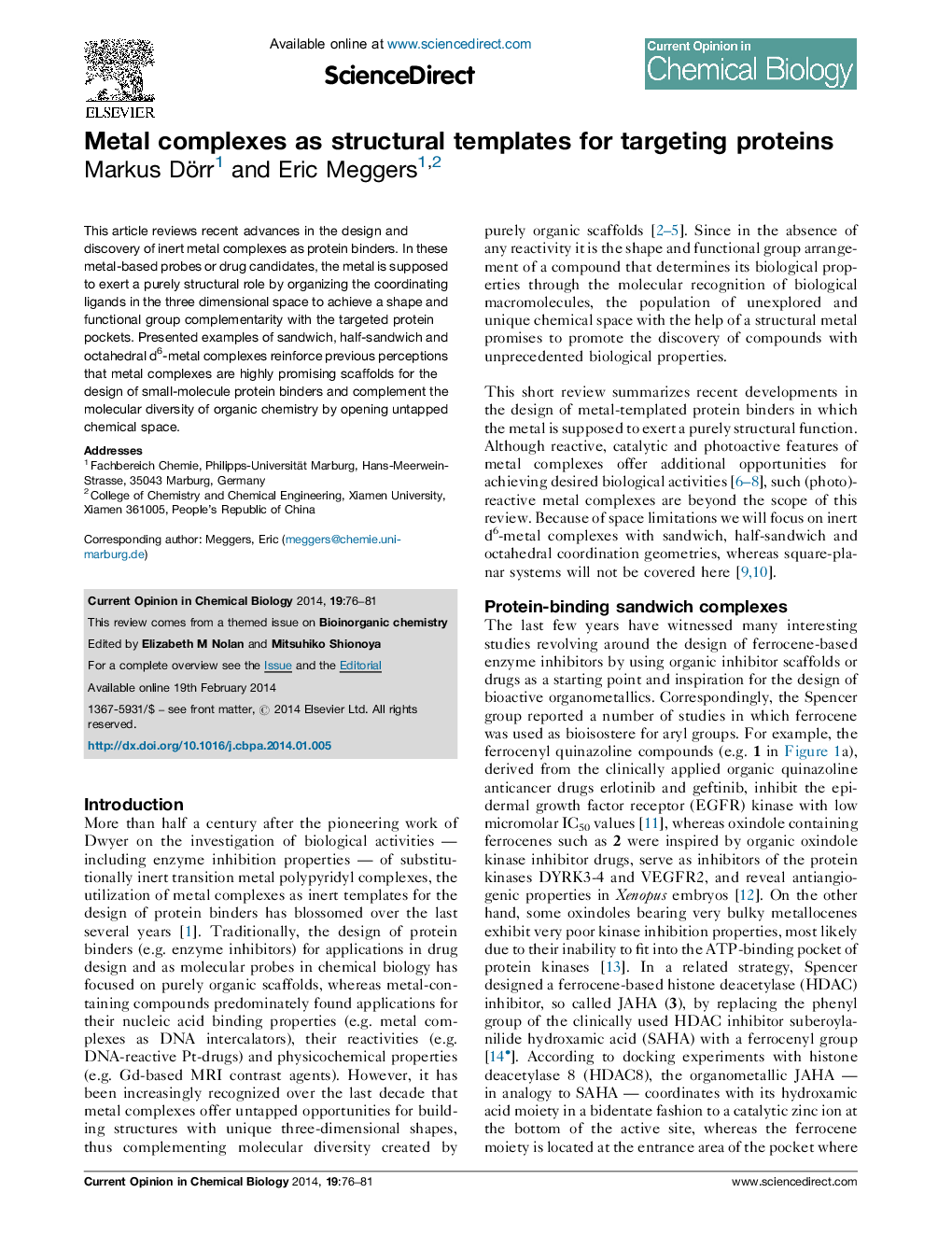| Article ID | Journal | Published Year | Pages | File Type |
|---|---|---|---|---|
| 7694944 | Current Opinion in Chemical Biology | 2014 | 6 Pages |
Abstract
This article reviews recent advances in the design and discovery of inert metal complexes as protein binders. In these metal-based probes or drug candidates, the metal is supposed to exert a purely structural role by organizing the coordinating ligands in the three dimensional space to achieve a shape and functional group complementarity with the targeted protein pockets. Presented examples of sandwich, half-sandwich and octahedral d6-metal complexes reinforce previous perceptions that metal complexes are highly promising scaffolds for the design of small-molecule protein binders and complement the molecular diversity of organic chemistry by opening untapped chemical space.
Related Topics
Physical Sciences and Engineering
Chemistry
Chemistry (General)
Authors
Markus Dörr, Eric Meggers,
